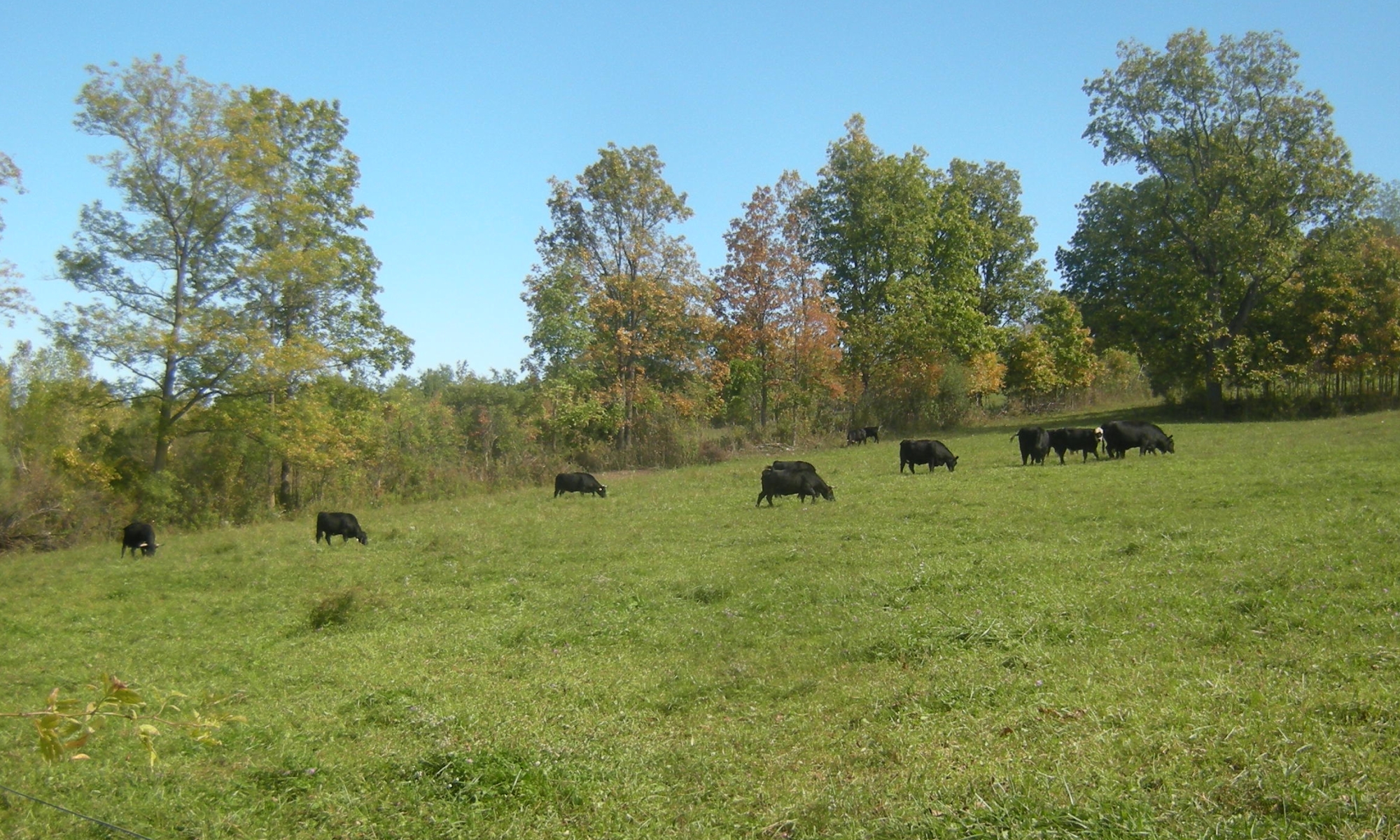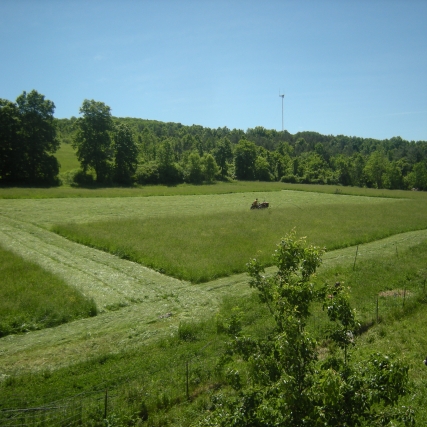
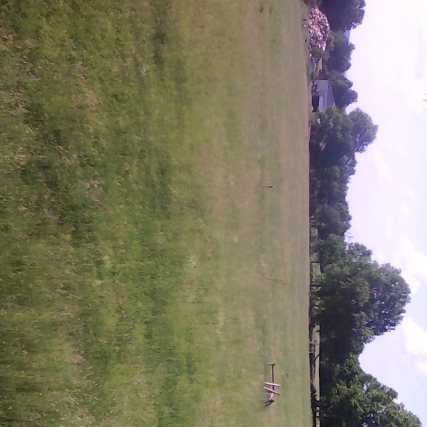
The Bros have been doing this recently. What does that literally look like? First, you look for a 3-4 day stretch of dry, warm, sunny, windy weather.
- Dry – the less rain you have falling the better your hay will cure. You can have some rain at certain points in the process and still get decent hay. No rain is best.
- The warmer the weather is the faster the hay will dry.
- Sun helps the hay to dry.
- Wind helps to pull the moisture out and to dry the hay.
Next, fresh grasses (orchardgrass, timothy) and legumes (alfalfa, clover) of the hay field are cut usually with a sicklebar mower or a disk or haybine after the dew has dried. We use a sicklebar mower attached to an Allis Chalmers B. The grass is laid out and can dry. [A disk or haybine would put it more in a row. It might also have a crimper on it. Crimping cracks the stems so that they can dry faster. After a day, it would be tedded, which is spreading and fluffing it, to help it dry out. We don’t have a crimper or a tedder, so it can take longer for our hay to dry out.]
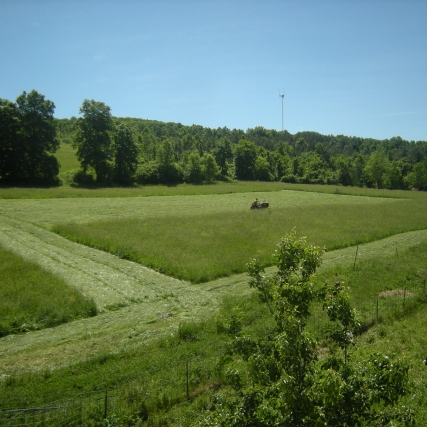
Cutting hay 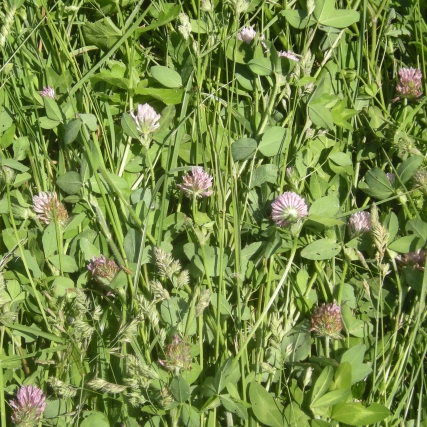
Close up of cut clover 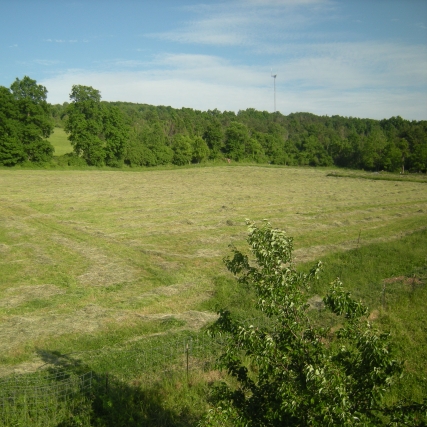
Cut field
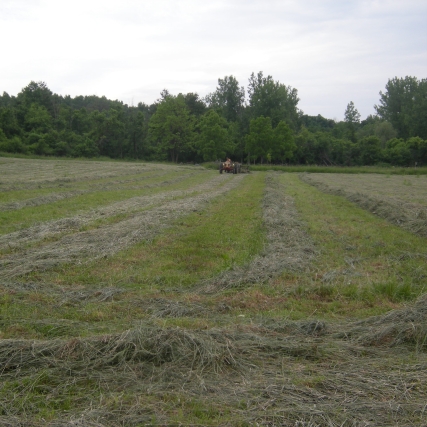
After a day or two of drying, we use a rake attached to the John Deere Model M to turn the grasses so that the underside gets dry. We usually turn it after the dew has dried on the top. Then we rake the hay into rows so that the hay is all together for the baler to bale.
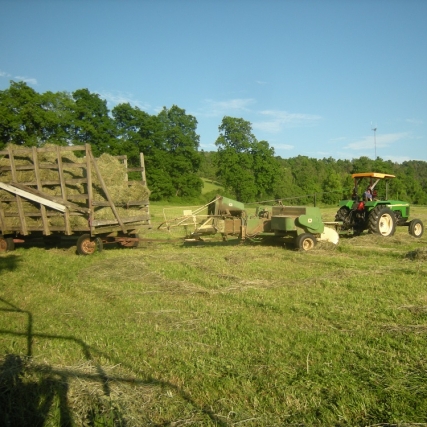
The baler, driven this year by a farmer friend/neighbor, comes through, picks up the hay, cuts it and packs it into slabs, strings them, and throws the resulting bale out the back into the hay wagon. Finally we pull the wagon into the barn and stack the hay from the wagon onto pallets.
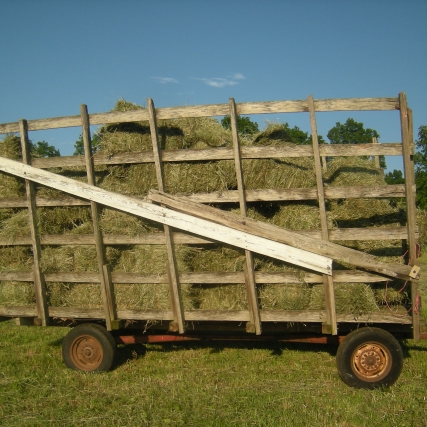
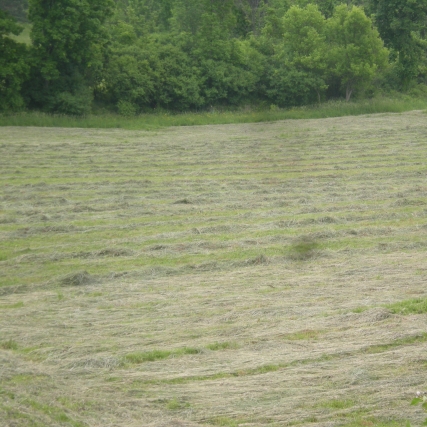
Raked field 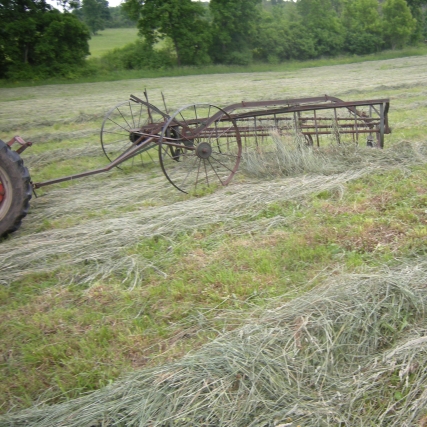
Hay rake 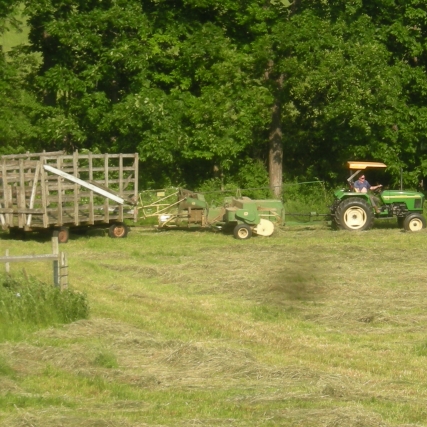
Baling starting 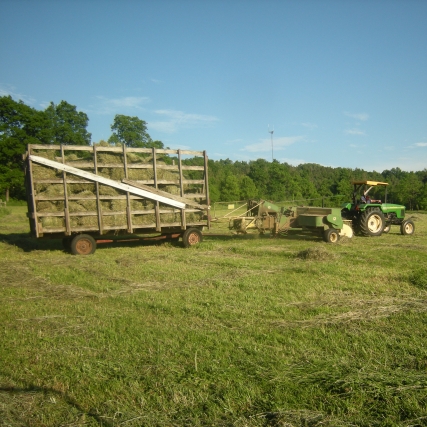
Baling finishing 
Finished product
